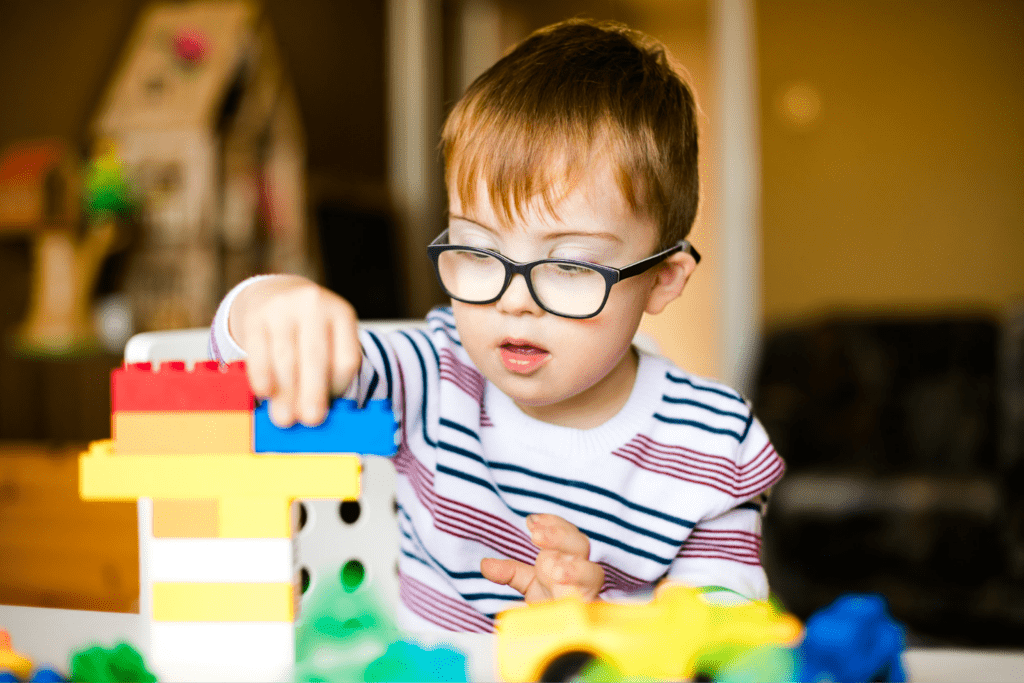
It is a bright afternoon in a vibrant kindergarten class where the energy of children can be felt. One of them, Alex, is a bubbly 5-year-old who loves puzzles and storybooks. Lately, his parents have been seeing him frequently flapping his hands very fast, especially when excited or overwhelmed. At first, they were perplexed and worried by this abrupt change, but they embarked on an expedition to find out why and how they could best support their child.
Hand-flapping is one of the common repetitive behaviors that autistic children engage in as a result of intense emotions or sensory experiences. It may seem strange at first but understanding from the perspective of the child is important for proper support.
What is Hand-Flapping?
The act of rapidly moving hands and wrists is often associated with individuals living with autism as a way to either regulate sensory input or show emotional imbalance. This mechanism can serve as a coping strategy during overwhelming events or pure expressions of happiness.
Why Does Hand-Flapping Occur?
Hand-flapping usually occurs due to sensory overload management needs and it can be triggered by excitement. Processing sensory inputs for autistic children can be quite difficult. Thus through autism hand flapping, kids are able to modulate incoming stimuli from their environment e.g., if it’s blocking off noise coming from a loud room or adapting to a crowdy space.
Moreover, hand-flapping is an example of stimming—a repetitive motion meant to trigger self-sensory input in one or more senses. Stimming helps manage anxiety, focus attention, or relieve overwhelming sensory experiences.
Practical Solutions: Professional Insight into Occupational Therapy
- Occupational Therapy: (OT) presents tailored techniques to help autistic children manage their sensory sensitivities and improve their ability to use their senses by permitting them to flap their hands. Some cultural crashes remediated through occupational therapy:
- Proprioceptive Activities: Activities of this nature give muscles and joints feedback, which can decrease the urge to hand-flap. Particularly useful in these are such tools as stress balls or therapy putty. In so doing, children get what they need ignorantly through a more controlled and appropriate channel.
- Rhythmic Movements: Another strategy is incorporating rhythmic activities such as drumming or swinging. Through these activities, sensory needs are met while minimizing hand-flapping. The repetitive/redundant nature of these movements produces a calming effect that enables children to control their input from their senses better.
- Structured Play: Integrating structured play sessions that focus on fine motor skills can also be beneficial. Drawings, block building, or playing with small objects improve the movement of the fingers thus reducing flapping.
- Environmental Adjustments: Modifying the environment to minimize sensory overload can also help. This involves developing a sensory-friendly space where there is low artificial light and noise pollution as well as decreased use of stimulating colors which leads to less hand flapping.
By following these OT-oriented strategies, parents and caregivers may assist autistic children in better managing their sensory inputs, leading to improved functional abilities and quality of life enhancement.
Activities You Can Do at Home to Help Your Child
The inclusion of supportive activities within daily routines can make quite a difference. Some practical activities that parents can easily integrate into their schedules include;
- Sensory Bins: Create a sensory bin filled with rice, beans, or water beads to offer various textures. This allows for exploration and structured feedback from the senses.
- Deep Pressure Activities: Examples include bear hugs, weighted blankets, and yoga poses, all of which create deep pressure comforting.

Emily's Progress Case Study
Emily, an eight-year-old girl who has autism, often twitched her hands, especially when it was noisy. Let’s see how Emily’s occupational therapist came up with a personalized sensory diet that included weighted vests, joint compressions, and scheduled periods of sensory play. In a few months, the child’s teachers observed less and less rates of her hand-flapping behavior, which corresponded with improved school-related performance evidenced by increased concentration while in class.
Beyond the Physical: Supporting Emotional Well-being
Just as physical interventions play a crucial role, understanding and addressing the emotional triggers behind hand flapping is equally important. Incorporating emotional regulation strategies into daily routines can significantly enhance a child’s ability to manage their emotions and reduce hand-flapping behavior.
Visual schedules and timers are powerful tools for reducing anxiety related to the unknown, a common trigger for hand flapping in autistic children. By providing a clear structure and routine, visual schedules help children feel safe and secure, minimizing uncertainty and the need for self-stimulatory behaviors.
Another effective tool is the use of Hand Flapping Emoji Cards. These cards allow children to associate specific feelings with an emoji, helping them to express their emotions more clearly without resorting to managing hand flapping. By identifying and acknowledging their feelings, children can develop better emotional awareness and communication skills. This approach not only supports their emotional well-being but also promotes healthier coping mechanisms, reducing the frequency of hand flapping and other self-stimulatory behaviors.
Building a Network: Community and Support
The management of hand flapping may change when one builds a supportive network. In order to take care of their parent’s or guardian’s emotional needs, local autism support groups, therapy centers, and online forums should be engaged with:
- Autistic Behavior Workshops and Seminars: Attend events on autistic repetitive behaviors where you will hear from expert facilitators and other parents.
- Online Discussion Forums for Parents of Autistic Children: Sharing experiences of what others in similar situations have done is invaluable for any parent.
Embracing the Journey: Conclusion
To offer support effectively it is necessary first to understand how this disorder manifests itself through this symptom in autistic children. We can create an environment that encourages their development by accepting their unique way of relating to world. Every child travels differently on this journey; hence figuring out what works best for your own child may require some time and patience.
It is crucial for parents/caregivers to share their experiences and strategies that have worked since it is building a supportive community priceless. Remember – you do not walk alone on this path; the support offered by you nowadays enhances tomorrow filled with understanding as well as inclusion.





